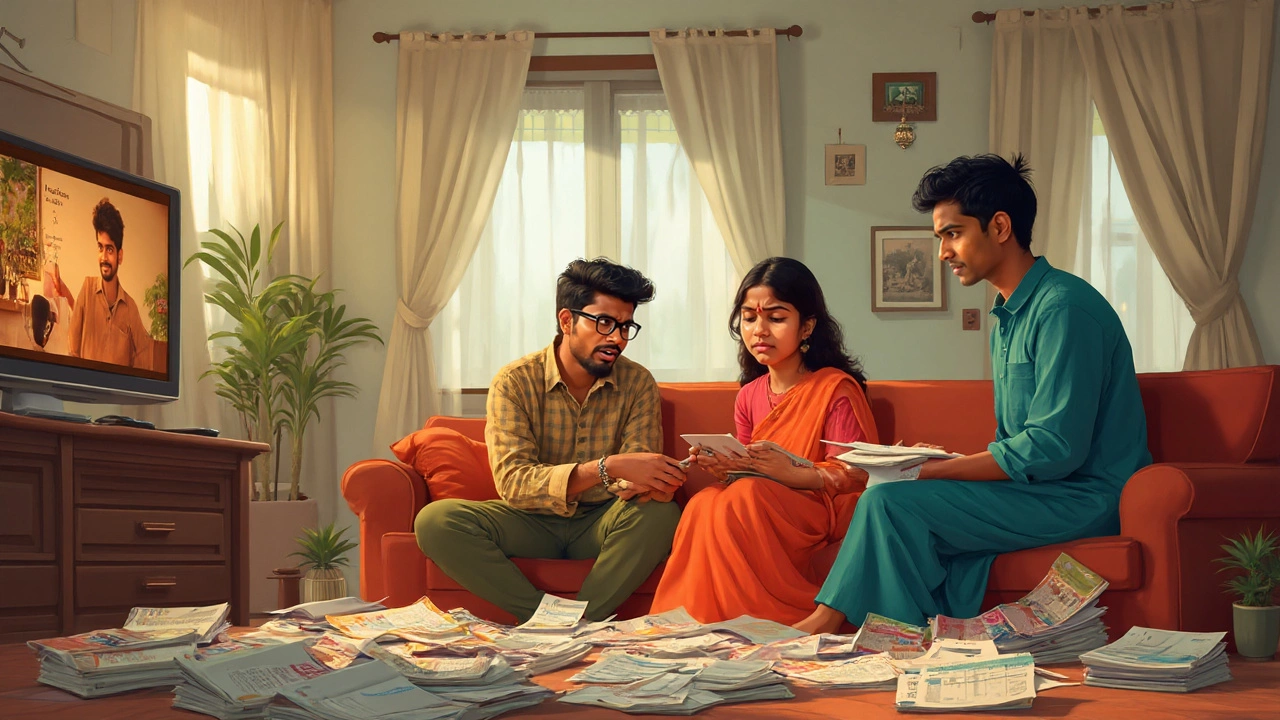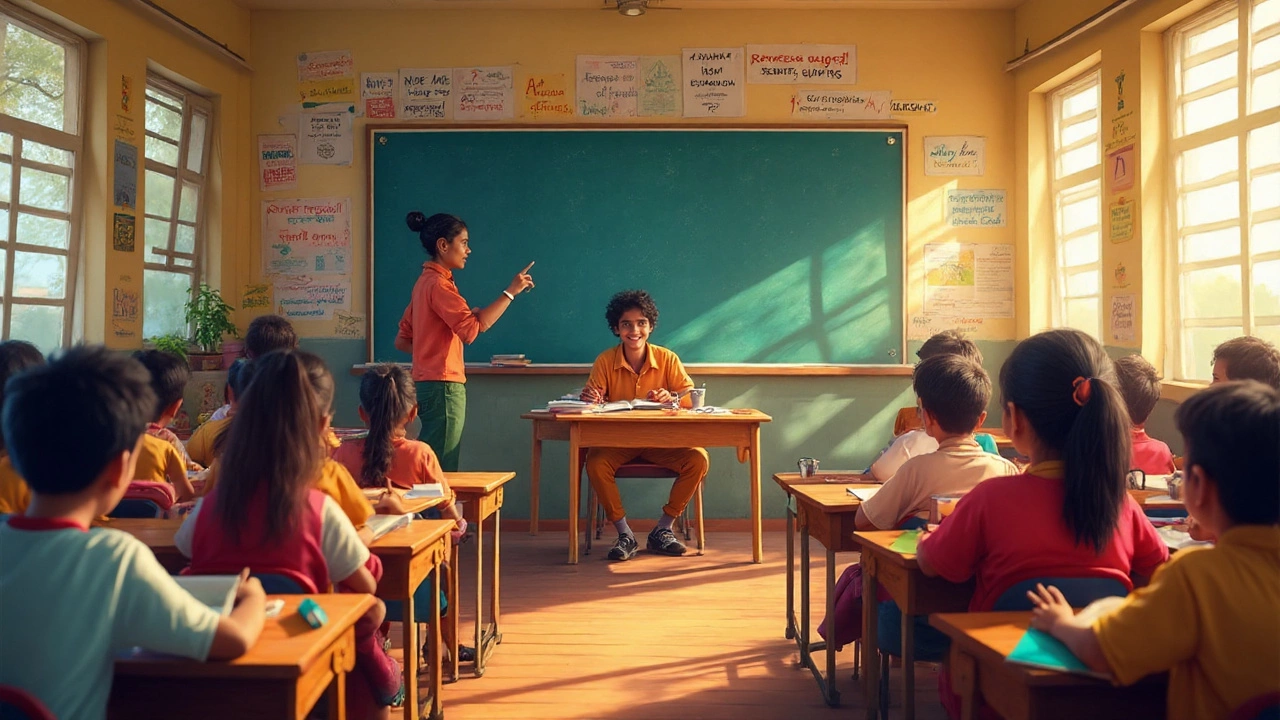Imagine making coffee in the morning and hearing your teen ask, “Dad, should I join Allen or Aakash?”—it hits you, right there, how much is riding on this decision. Whether you’re hoping for IIT, medical, or just a clear shot at a great career, the name of the coaching institute you pick often echoes through years of effort, money, and family life. There are dinner-table debates, WhatsApp forwarded ranks, and endless YouTube reviews, but when it comes down to it, you want the truth. What really sets Allen and Aakash apart? Beyond the billboards and brochures, which one can push a regular kid—not a robot genius—towards their best possible result? I’ve lived this journey and grilled dozens of students, parents, and even a reluctant Max (our beagle, mostly interested in any snacks dropped during late-night study sessions). Here’s what actually matters.
What Makes Allen and Aakash Stand Out: Legacy, Reach, and Reputation
Both Allen and Aakash pretty much rule the market when it comes to entrance exam coaching in India. Allen, founded in Kota back in 1988, was started by a small group of brothers who wanted to make a difference outside the flashy metros. Fast forward to today, Allen Career Institute has spread its branches across 50+ cities and teaches over 2 million students a year, with huge results—think 74% of NEET 2024’s top 100 ranks and regular double-digit JEE AIRs. Aakash, which started in Delhi in 1988, was actually the first big national chain. It now has more than 300 centers covering pretty much every big city and town, focuses on personal mentoring, and has its own massive online platform after being acquired by BYJU’S in 2021 for about a billion dollars.
So what does this legacy actually mean for your kid? Plenty. Both institutes invest millions in teacher training and R&D—Allen claims over a thousand faculty with “educator-only” selection tests, while Aakash has standardized teacher modules and a culture of “ed-tech meets personal touch”. Of course, plenty of people just care about ranks: in 2024, 19 out of top 20 AIR in NEET came from Allen, while 32 Aakash students cracked JEE Advanced’s top 500. But it’s not just the toppers—ask around at any regional center and you’ll find class toppers from regular CBSE and even state boards. It’s not just the Kota-whiz crowd these days.
Teaching Styles and Study Materials: Chalk, Talk, Tech – What Works for You?
If you’re the type who remembers teachers by their quirks (like that Math sir who always said “You see, beta…”), you’ll notice right away that Allen and Aakash have totally different classroom vibes. Allen’s classes are famously intense: chalk-and-talk is king, most senior teachers stick to Kota’s old-school formulas, and there’s strict, silent discipline. They’re big on in-person problem-solving marathons—imagine Rohan coming home exhausted after a 4-hour Sunday “doubt-clearing” blitz. Aakash, on the other hand, tries to keep it personal; their batches are supposedly smaller, so teachers keep closer tabs, and there’s a heavier dose of PowerPoint, animations, and digital quizzes—even more after BYJU’S took over. This can matter for average or shy students who hesitate to speak up in massive lecture halls.
Let’s talk about books and test series—the bread and butter. Allen’s iconic “Success Mantra” modules are thick, detailed, full of Kota-style trick questions, and get updated every year based on latest exams. They run weekly topic tests and full-length mocks that mimic real JEE/NEET timings, down to the mark distribution. Aakash, meanwhile, has its own “Aakash Prakashan” modules that are crisp, NEET and JEE focused, and break up long concepts into small everyday examples. Kids who hate wading through 100-page chapters sometimes find Aakash more manageable. However, Allen’s massive internal test series—sometimes with 100,000+ kids giving the same exam on the same day—gives a dead-real ranking, a powerful motivator for self-driven students.

Performance, Results, and Student Success Stories: Who Delivers Better Rank Odds?
Numbers don’t lie, but sometimes they don’t tell the whole story either. If you just look at headlines, Allen absolutely swept the NEET 2024 results. Here’s a quick stats table for the latest year:
| Exam | Institute | Top-100 Ranks | Selections | Faculty-Student Ratio |
|---|---|---|---|---|
| NEET 2024 | Allen | 74 | 30378 | 1:55 |
| NEET 2024 | Aakash | 24 | 18750 | 1:38 |
| JEE Advanced 2024 | Allen | 38 | 9870 | 1:58 |
| JEE Advanced 2024 | Aakash | 21 | 6650 | 1:39 |
Allen consistently gets more toppers, at least for NEET and JEE, partly because their main Kota center is like Olympic training for students. That said, I’ve met plenty of Aakash students who made dramatic jumps—think of Kavya’s classmate who went from scared of Physics in 11th to a top AIIMS call after just a year at her neighborhood Aakash. Their smaller batch sizes sometimes mean struggling kids get noticed faster. One raw trick: ask students not the batch toppers, but those who improved their “internal percentiles” the most—Aakash kids often moved up 40-50%iles over the year, while Allen toppers mostly stayed at the top, but weaker kids sometimes struggled in a cutthroat crowd.
Real talk: if your child is genuinely self-motivated and can handle competition, Allen’s massive pool and tough tests can create next-level performance. If they need more hand-holding and don’t want to get lost in the crowd, Aakash might feel less intimidating. Look for “distance learning” solutions if you can’t shift cities—both offer solid online hybrid programs post-COVID, but Allen’s “digital” platform is admittedly less user-friendly than Aakash BYJU’S-inspired app.
Fees, Admissions, and Scholarships: The Real Costs of the Coaching Craze
Money talks, especially with coaching. A full 2-year classroom program for IIT JEE at Allen’s Kota main is around ₹1.63 lakh per year in 2025 (not counting hostel, food, tons of test series, and extra sessions). Medical (NEET) costs about the same. “Satellite” branches in cities like Bangalore, Chennai, and Mumbai are sometimes slightly cheaper, but not by much. Aakash is surprisingly similar for their main “regular” courses—about ₹1.55 lakh per year for classroom batches, but their “iTutor” and “live online” packages can save 10-25% if you’re okay with no in-person classes.
Both chains offer a galaxy of scholarships—for board toppers, national olympiad kids, even “early bird” admissions. Allen has its annual ASAT scholarship test, while Aakash runs ANTHE, the Aakash National Talent Hunt. In 2024, around 22% of Allen students got at least some slab of tuition fee waiver, while Aakash was a bit more generous by number, but the absolute high-performer waivers (90%+) were about tied between the two. Tip: If you’re really concerned about funds, don’t skip state-level or in-house “school + coaching” tie-ups—some small towns have deals where school fees include a coaching package, and this is sometimes a fraction of the big-brand cost.

Choosing the Right Match: Batch Size, Hostel Life, Parental Support, and Gut Feel
No brochure will tell you the “human side” of this choice. Who will your kid’s batchmates be? At Allen’s Kota HQ, more than 60% of students in a typical NEET toppers’ batch come from outside Rajasthan—Andhra, Maharashtra, Kerala, UP. Kids live in hostels, often with strict wardens and curfews. For some, it’s the first taste of real independence; for others, it’s overwhelming. Back home in city-based branches or Aakash’s urban centers, commutes may be easy but distractions are plenty—phone, friends, family weddings (don’t ask me about Kavya’s pre-boards meltdowns during cousin’s sangeet season!).
Allen batches at HQ sometimes exceed 150, even 200 in a big “topper” lecture; Aakash keeps most classroom batches under 60 and claims more frequent “doubt” sessions. Both have 24/7 “doubt helplines”—usually WhatsApp-based these days—but the quality depends on staff, not rules. Talk to ex-students: some Allen toppers bond for life, Aakash folks say the “mentor connection” matters. Hostel and PG life varies: Allen’s own hostels are strict, food is edible but not homey; most Aakash branches don’t run hostels but link with third-party PG mess rentals.
The one thing no ad captures: parent involvement. It’s not just about writing cheques—every month, there’s a parent-teacher meet, percentiles sheets, endless “motivation” talk (my son Rohan calls these “Dad’s TED Talks”). Institute ERP apps send real-time test scores, but they can’t replace real emotional support. Want a tip? Visit both branches (just say you’re “inquiring for admission”), sit quietly in a class, watch the teachers, ask random students at the canteen. Trust your gut—and your child’s gut too. That’s what usually sticks beyond just the hard numbers.
